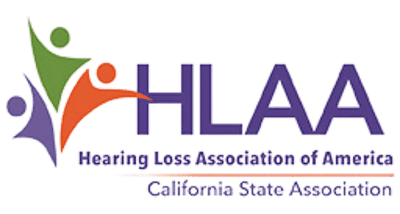
By Dr. Ray Goldsworthy
I am fortunate to conduct hearing research at the University of Southern California (USC) where the various professional schools provide a rich environment for multidisciplinary research. Hearing research combines expertise from different areas including biology, engineering, mathematics, medicine, neuroscience, psychology, and increasingly, the creative arts. At USC, we are pioneering research in auditory brainstem and cochlear implants, regenerative medicine, and social sciences. In this article, I summarize some of the projects underway, as well as our plans for the future. One point that I want to emphasize is that hearing research is a wonderful career for people with hearing loss. My own hearing loss has been a constant source of insight and motivation throughout my career.
A central hub for the work we do is the USC Hearing & Communications Neuroscience Program. This program is designed to provide graduate students with an interdisciplinary structure to develop the breadth and depth of knowledge essential for a graduate degree in hearing science. One of my colleagues, Dr. Sarah Bottjer, is director of this program; she conducts research into vocal learning of songbirds. By understanding the neural mechanisms of vocal learning, her laboratory provides insight into neural development, learning and memory, and the neural mechanisms that mediate behavior. Another colleague, Dr. Laurie Eisenberg, is directing a pediatric trial of auditory brainstem implants in collaboration with Children’s Hospital Los Angeles.
Other researchers are laying a foundation for the next generation of hearing solutions by characterizing the physiological properties of the auditory system and using this knowledge for pioneering work in regenerative medicine. The next generation of hearing solutions based on regenerative medicine will tap into natural biological processes for regenerating damaged tissue. It is well known that some animals, for example birds and reptiles, can regenerate their hearing receptor cells when damaged. Scientists at USC such as Dr. Radha Kalluri, Dr. Takahiro Ohyama, and Dr. Neil Segil are investigating the use of stem cell therapies towards achieving regeneration of damaged hearing receptor cells in humans. This research takes the long view for hearing solutions, clinical therapeutics are not expected for several decades, but the power of this approach is undeniable.
These pioneering projects are conducted in close collaboration with the Keck School of Medicine at USC. The department driving medical translation of hearing research into hearing healthcare solutions is the USC Tina and Rick Caruso Department of Otolaryngology – Head and Neck Surgery, which has experienced rapid growth over the past 5 years. Much of that growth was ushered in by Dr. John Niparko, a dedicated surgeon and pioneering scientist who studied language and social outcomes in children after they receive cochlear implants. Dr. Niparko’s research program spanned several universities across the United States, and laid the foundation for understanding language and social outcomes for children with hearing loss. Dr. Niparko passed away in April, 2016, but his legacy lives on through his medical and research accomplishments.
Given the breadth and depth of hearing research at USC, I am fortunate to work and contribute in this environment. My research focuses on improving music appreciation and speech recognition in noisy situations for cochlear implant users. These aspects of hearing can be improved through new developments in the mathematics of how sound is converted into electrical stimulation delivered to the cochlear implant electrode array. This process of converting sound to electrical stimulation is referred to as sound (or signal) processing. Traditionally, the sound processing strategies implemented on clinical devices are effective in conveying certain aspects of sound, but they can be improved in regards to how they encode the detailed timing characteristics of sound.
Scientists refer to the very fast details of sound as the temporal fine structure. Typically, this temporal fine structure of sound can occur as quickly as several millionths of a second. Many scientists believe that such temporal fine structure is important for music appreciation as well as for speech recognition in noisy environments. Today, cochlear implant companies are starting to introduce sound processing strategies designed to better encode such detailed timing characteristics.
My research examines the potential for these new strategies by considering the limits of musical pitch perception and sound localization in cochlear implant users. My work with musical pitch perception has shown that previously held scientific beliefs regarding the limits of pitch perception through cochlear implants have been inaccurate because previous work did not sufficiently consider the importance of auditory experience. Our brains are wonderfully adaptive to new sensory experiences, and auditory training can be used to improve our hearing, including for challenging tasks of musical pitch perception.
My work with sound localization examines how well bilateral cochlear implant users can use timing differences across ears as a cue to determine the location of a sound. This is a wonderfully rich area of study as only now have bilateral cochlear implants become a common clinical solution to hearing loss. We are exploring the many factors that contribute to individual differences between bilateral cochlear implant recipients. Spring 2021: We are looking for more bilateral cochlear implant users to participate in our research, so please contact me if you are interested in taking part (contact info at end of article).
Our plans for the future include expanding services to improve the quality of life for people with hearing loss. Young children, adults, and elderly individuals with hearing loss face unique challenges adjusting to hearing loss. Our work with children benefits immensely from close collaboration with the John Tracy Clinic, a Los Angeles center providing family-centered services to children with hearing loss since 1942. Together, we are expanding services to improve not only the function of cochlear implants and hearing aids, but to ensure that the psychological and social aspects of hearing loss are cared for.
Hearing science is a collaborative venture. We are always looking for people to get involved with our efforts at USC. The future of hearing healthcare must be driven not by clinicians or scientists, but by the people with hearing loss who know from personal experience what is needed. I encourage anyone interested in hearing science at USC to contact me for more information.
This article originally appeared in The Hearing Los Californian, Summer 2017.
Ray Goldsworthy received his BS in Physics from the University of Kentucky in 1997, and his PhD in Health Sciences and Technology from Harvard University and the Massachusetts Institute of Technology in 2005. After completing his doctoral studies, Ray led product development teams at Sensimetrics Corporation in improving cochlear implants and hearing aids, and in providing rehabilitation software to help people with hearing loss make the most of their hearing. Ray joined the University of Southern California as an Associate Professor in January, 2014. Ray is a cochlear implant user and is passionate about the interplay of auditory experience, auditory perception, and medical bionics. Contact Ray at Raymond.Goldsworthy@med.usc.edu



